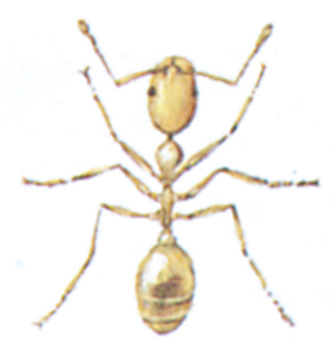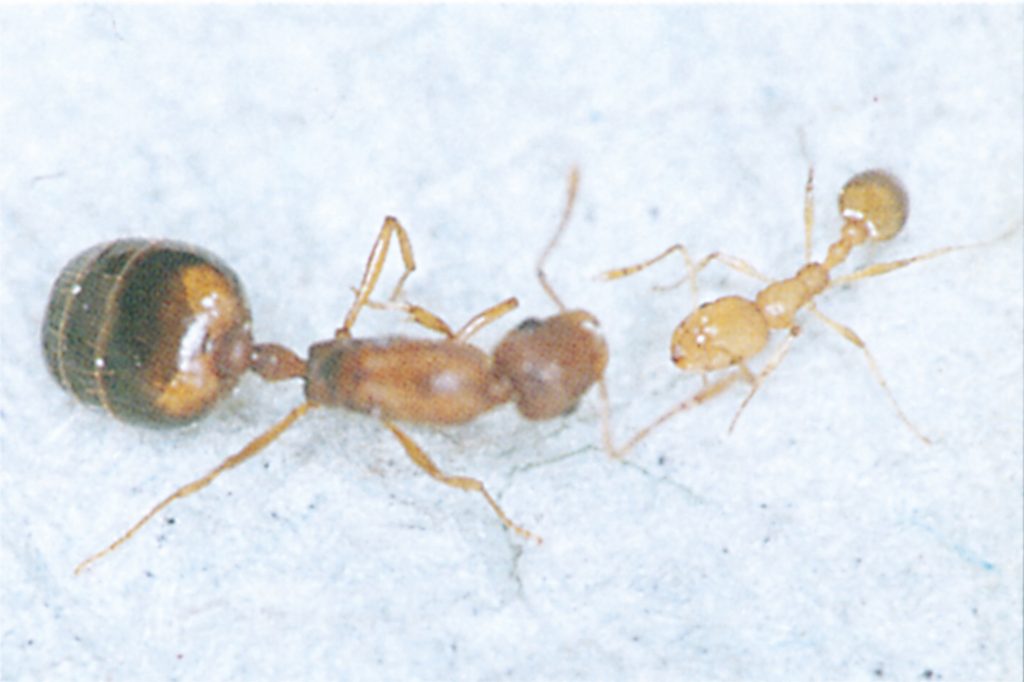Latin: Monomorium pharaonis

This small yellowish-red ant gets its popular and specific names from the fact that it was erroneously believed to have been one of the plagues of ancient Egypt.
In fact, it came originally from the tropics and reached Europe in the early years of this century. It is completely dependent upon heated houses.
Like the native ants, this tropical species lives in colonies, but in contrast to most other ants there are sometimes several queens in each colony. When a colony has reached a certain size, some of the workers and queens leave taking with them a number of eggs and larvae.
The colonies are established in sheltered dark places, usually near a source or warmth, for these ants prefer a temperature of 27-30° C.
Once a building is infested there will soon be several so-called satellite colonies which live peace- fully together. They can be regarded as one large family, consisting sometimes of hundreds of thousands of ants.

Pharaoh ants are almost omnivorous
They usually feed on sweet substances, but they also visit meat products, cheese, dead insects and carrion. They are sometimes found in food stores, shops, canteens and even in private houses. In most cases they do little or no damage but they can be rather annoying.
In hospitals where conditions are more or less ideal for them these ants may be dangerous as possible distributors of disease. They can penetrate beneath bandages and find their way into sterile packs.
They are usually spread from place to place by the introduction of materials that contain a colony.




